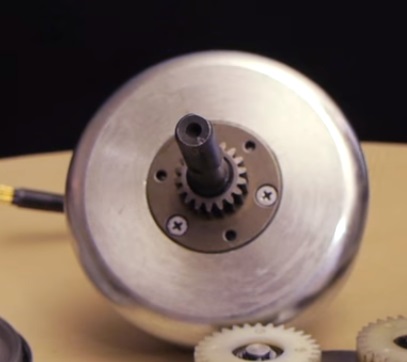MexicanElmo
1 mW
- Joined
- Aug 10, 2017
- Messages
- 14
Hello Forum,
I want to build a mid drive style project but keeping it as simple, light and efficient as possible (who doesn't right?) So, what I want to try is to use the rotor and stator of a 500-1000 watts hub motor (MAC style), by removing it's freewheel planetary gears and side sideplates, just leaving what's on the image.

replacing that sun gear with an adequate sprocket, attach the axle to the frame and put a chain between the rear wheel and the motor (or what's left of it). Yes, straight to the motor, I don't want to put pedals there right now, I plan to build front pedal recumbent, so that's for later.
I don't have any experience working or even looking at geared hub motors, what I've seen is just what's online, so I was wondering if this setup would be able to withstand pulling the rotor just by one side, you know the chain will push to just one side of the sprocket (the one I'll replace the sungear with), hence maybe wearing down the rotor's roller bearing at an unjustified rate or even missaligning the rotor making the magnets touch the stator. Any thoughts?
Why would I do that? Well, to keep it light, to keep it looseless ( I mean if I'm going to have loosess on the chain I don't want extra loosess on the planetary gears, I don't want to deal with wear of planetary gears, to avoid the unsprung weight scenario and to have regen. Of course I'm considering the appropiate gearing to keep the motor spinning at a confortable rpm.
I like the form factor of geared hubs stators/rotors, and I don't see any direct drive hub motor with a similar size, weight and power that works in the 1000-2000 RPM optimally (I'm planning a 1:5 gearing and a 20 inch wheel).
Do you know about any other type of BLDC motor similar in size, power and rpm? it doesn't matter if it's sensored of not.
If what I suggested above with the geared hub motor/stator is not feasible and there's no other motor type as light powerfull and well suited for my application maybe I will have someone to machine a rotor, which supports itself on both sides of the stator but being lighter than direct drive's cause my sturdiness requirements are not that high.
I want to build a mid drive style project but keeping it as simple, light and efficient as possible (who doesn't right?) So, what I want to try is to use the rotor and stator of a 500-1000 watts hub motor (MAC style), by removing it's freewheel planetary gears and side sideplates, just leaving what's on the image.

replacing that sun gear with an adequate sprocket, attach the axle to the frame and put a chain between the rear wheel and the motor (or what's left of it). Yes, straight to the motor, I don't want to put pedals there right now, I plan to build front pedal recumbent, so that's for later.
I don't have any experience working or even looking at geared hub motors, what I've seen is just what's online, so I was wondering if this setup would be able to withstand pulling the rotor just by one side, you know the chain will push to just one side of the sprocket (the one I'll replace the sungear with), hence maybe wearing down the rotor's roller bearing at an unjustified rate or even missaligning the rotor making the magnets touch the stator. Any thoughts?
Why would I do that? Well, to keep it light, to keep it looseless ( I mean if I'm going to have loosess on the chain I don't want extra loosess on the planetary gears, I don't want to deal with wear of planetary gears, to avoid the unsprung weight scenario and to have regen. Of course I'm considering the appropiate gearing to keep the motor spinning at a confortable rpm.
I like the form factor of geared hubs stators/rotors, and I don't see any direct drive hub motor with a similar size, weight and power that works in the 1000-2000 RPM optimally (I'm planning a 1:5 gearing and a 20 inch wheel).
Do you know about any other type of BLDC motor similar in size, power and rpm? it doesn't matter if it's sensored of not.
If what I suggested above with the geared hub motor/stator is not feasible and there's no other motor type as light powerfull and well suited for my application maybe I will have someone to machine a rotor, which supports itself on both sides of the stator but being lighter than direct drive's cause my sturdiness requirements are not that high.

